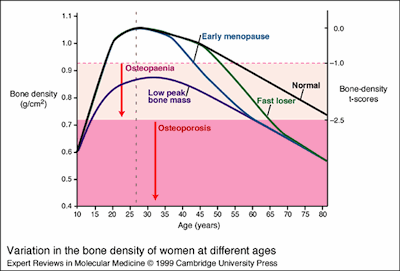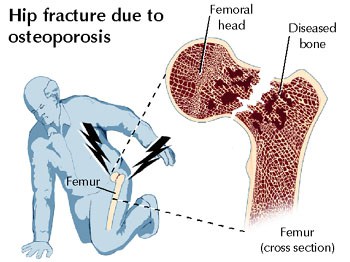Almost 99% of the mass of the human body is made up of oxygen, carbon, hydrogen, nitrogen, calcium, and phosphorus. Magnesium is one of a select few minerals that make up the remaining 1%.
It may seem insignificant, especially when compared to the superstar elements that make up the 99%. But without magnesium you would die.
Just as one tiny fuse can stop your car from rolling, a life without miniature magnesium would mean no life at all.
An Unsung Hero:
Magnesium is crucial for hundreds of biochemical reactions in the body.
It helps to: regulate muscle and nerve function; keep heart rhythm steady; support a healthy immune system; keep bones strong; regulate blood sugar levels; promote normal blood pressure, and is involved in energy metabolism and protein synthesis.
It is known that all minerals work together as a team. If one mineral is missing, it actually reduces or stops the performance of the others.
When magnesium is absent or if we’re deficient, modern science has discovered that a negative chain reaction takes place, increasing your chances of osteoporosis, hypertension, cardiovascular disease, and diabetes. (1)
Magnesium and Osteoporosis
There are many minerals needed to ensure good bone health. Calcium first comes to mind as it makes up a large part of your bone mass.
But in the western world we consume lots of calcium, yet still have the highest rates of osteoporosis.
Why? Because calcium doesn’t automatically go from your mouth to your bones.
The rate at which calcium dissolves, then absorbs into your bloodstream and then is directed to your bones is affected either up or down by the amount of other minerals and vitamins.
Magnesium is one of the critical minerals for getting calcium to the bones – because it affects calcium metabolism and the hormones that regulate it.
How? Magnesium helps convert vitamin D into its active form. The conversion to its active form is essential for greatest calcium absorption. The more calcium we absorb, the more that will get to the bones. (1)
“Magnesium keeps calcium dissolved in the blood. Without the proper balance of magnesium to calcium, about a 1:1 ratio, calcium ends up depositing in your kidneys and can create kidney stones, in your coronary arteries resulting in clogged arteries, and in joint cartilage, rather than in your bones where you need it most. The more calcium you take without the balancing effect of magnesium, the more symptoms of magnesium deficiency and calcium excess you are liable to experience,” ~ Dr. Carolyn Dean , MD, ND, magnesium expert and Medical Director of the nonprofit Nutritional Magnesium Association.”
Magnesium and Diabetes
Over 127,000 participants (85,060 women and 42,872 men) were examined for examine risk factors for developing type 2 diabetes.
They had no history of diabetes, cardiovascular disease, or cancer at baseline. Called the Nurses’ Health Study (NHS) and the Health Professionals’ Follow-up Study (HFS) it followed women for 18 years and men for 12 years.
The conclusion was the risk for developing type 2 diabetes was greater in men and women with a lower magnesium intake. (2)
There is an established connection with vitamin D deficiency and diabetes (3) that has been well publicized in the news. As a result, more people are becoming aware of the need for vitamin D.
Less known however, is that if you don’t get enough magnesium, you can’t convert vitamin D into its active form.
Magnesium and Cardiovascular Issues
Evidence is continuing to mount about the ability of magnesium to lower the risk of coronary heart disease. And observational studies indicates higher magnesium intake may reduce the risk of having a stroke. (4)
A study published in the journal Circulation reports that patients who took 365 mg of magnesium twice a day for six months ‘had better blood vessel function and their hearts showed less stress during treadmill exercise compared to the placebo group’ and that ‘supplements enabled heart disease patients to exercise for longer periods and appeared to protect their hearts from the stress of exercise. Magnesium also restored some of the blood vessels’ ability to open up when the body needs more blood.’ (5)
Magnesium, especially when we get it from magnesium rich foods, is a dynamic mineral capable of doing great things. And there are no known cases of excessive dietary magnesium causing toxicity.
But it is interesting that too much and too little magnesium from supplements has similar effects on the body: nausea, diarrhea, appetite loss, muscle weakness, difficulty breathing, extremely low blood pressure, irregular heartbeat and psychological changes. (6)
The Tolerable Upper Limit for magnesium is 350 mg per day for adults. (7)
For reasons noted above, this number should be adhered to more carefully if the source is supplements.
However, as with the study in the journal Circulation mentioned above, magnesium benefits to do with heart health have been observed in participants taking over 700 mg per day, via supplements.
Food Sources of Magnesium
Here are some of the best magnesium rich food sources that can provide you with this mighty, but miniscule powerhouse magnesium. (8)
| Source | mg | % of Daily Value |
| Wheat bran (1/4 cup) | 89 | 22% |
| Almonds, dry roasted, 1 ounce | 80 | 20% |
| Spinach, frozen, cooked, ½ cup | 78 | 20% |
| Raisin bran cereal, 1 cup | 77 | 19% |
| Cashews, dry roasted, 1 ounce | 74 | 19% |
| Soybeans, mature, cooked, ½ cup | 74 | 19% |
| Soybeans, mature, cooked, ½ cup | 69 | 17% |
| Nuts, mixed, dry roasted, 1 ounce | 64 | 16% |
Another whole food source of magnesium that happens to be crammed into convenient capsules is from marine algae:
| mg | % of Daily Value | |
| AlgaeCal Plant Calcium | 65 | 20% (naturally occurring) |
| AlgaeCal Plus | 350 | 80% (naturally occurring plus added Mag. carbonate) |
AlgaeCal Magnesium Relax™
Magnesium Relax provides a precise mix of these sleep-supporting nutrients to help settle the mind, reduce stress signals, and help you drift into deep, rejuvenating rest.
Here’s what goes into every bottle:
- Magnesium Glycinate, Citrate & Malate – a trio of easy-to-absorb magnesium forms that relax the body and mind so you fall asleep faster and stay asleep longer.
- Sensoril® Ashwagandha – supported by clinical research to cut cortisol by 24% and ease inflammation by 36%, clear signs your stress response is settling and true relaxation can begin.
- Zinc – supports melatonin production and helps you stay asleep through the night.
- P5P (active B6) – the bioavailable B6 that supports GABA production, helping quiet the mind and prepare the body for deep, restorative rest.
- AlgaeCal Absorb™ – our custom blend that helps your body soak up every drop of these calm-supporting nutrients.
Together, these ingredients help you relax more, stress less, and fall asleep naturally.
Get Magnesium Relax today for as little as $19 a bottle when you choose a 6-month bundle.
*These statements have not been evaluated by the Food and Drug Administration. This product is not intended to diagnose, treat, cure, or prevent any disease.
‡Results consistent with Clinical Trials. Results may vary.
†Open to US customers only.
References:
1. Institute of Medicine. Food and Nutrition Board. Dietary Reference Intakes: Calcium, Phosphorus, Magnesium, Vitamin D and Fluoride. National Academy Press. Washington, DC, 1999.
2. Lopez-Ridaura R, Willett WC, Rimm EB, Liu S, Stampfer MJ, Manson JE, Hu FB. Magnesium intake and risk of type 2 diabetes in men and women. Diabetes Care 2004;27:134-40.
3. http://www.webpronews.com/diabetes-linked-to-vitamin-d-deficiency-in-new-study-2012-11
4. Ascherio A, Rimm EB, Hernan MA, Giovannucci EL, Kawachi I, Stampfer MJ, Willett WC. Intake of potassium, magnesium, calcium, and fiber and risk of stroke among US men. Circulation 1998;98:1198-204.
5. http://www.webmd.com/heart-disease/news/20001109/got-magnesium-those-with-heart-disease-should
6. Jaing T-H, Hung I-H, Chung H-T, Lai C-H, Liu W-M, Chang K-W. Acute hypermagnesemia: a rare complication of antacid administration after bone marrow transplantation. Clinica Chimica Acta 2002;326:201-3.
7. Institute of Medicine. Food and Nutrition Board. Dietary Reference Intakes: Calcium, Phosphorus, Magnesium, Vitamin D and Fluoride. National Academy Press. Washington, DC, 1999.
9.U.S. Department of Agriculture, Agricultural Research Service. 2011. USDA National Nutrient Database for Standard Reference, Release 24. Nutrient Data Laboratory Home Page, http://www.ars.usda.gov/ba/bhnrc/ndl.








Article Comments